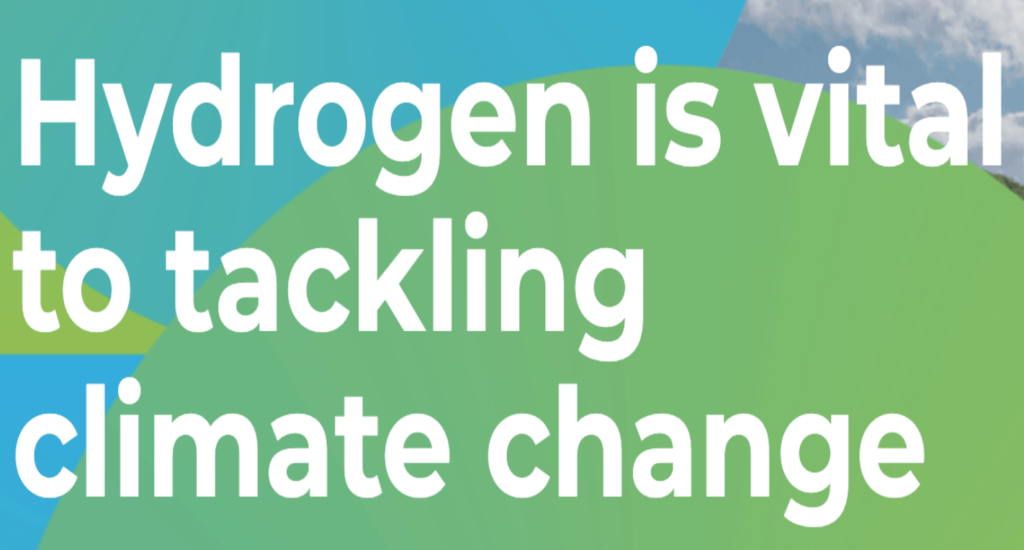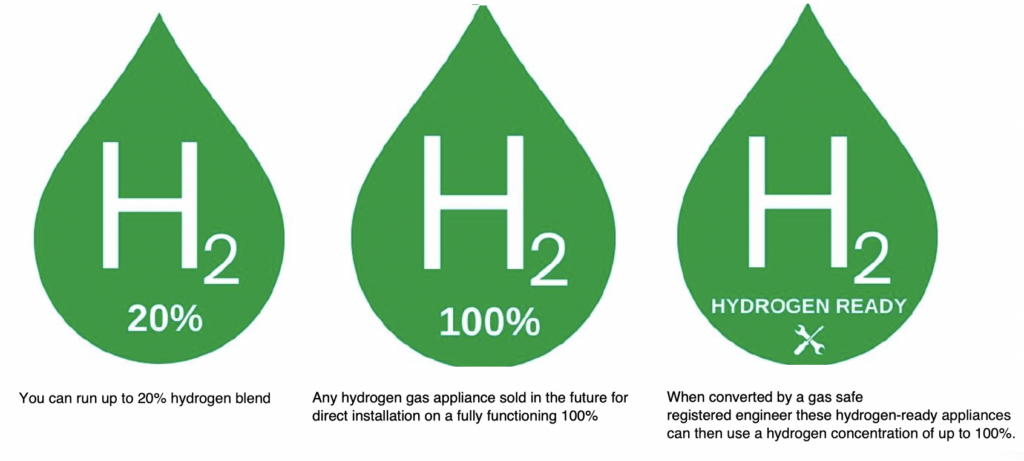Hydrogen Fires & Decarbonisation
At this current time, there are generally two main strategies for decarbonising the vast majority of homes in the UK. These are 1. The continued expansion of the electrical network with the installation of heat pumps, and 2. Changing to a low carbon hydrogen gas grid for properties which are on the current gas network.

Net Zero:
In the UK, we have committed to cutting greenhouse gas emissions to Net Zero by 2050. All areas of the economy need to decarbonise at a faster rate than we have done previously. Decarbonisation is well underway with electric power thanks to the growth of electric vehicles to help decarbonise transport.
However, with gas, it’s a little harder as a mix of technologies is required. Gas still supplies a large proportion of energy demand at peak times. There are many complexities and barriers to overcome with decarbonising the gas grid. The headache doesn’t end there either. Costs to the end user are a major consideration, as millions of people are living in fuel poverty in the UK due to the energy price cap increase. The energy price cap increased by a huge 54% in April 2022 and is estimated to rise again by 78% in October.

Hydrogen Blend
We have spoken before about the benefits of introducing hydrogen into the gas network. Blending up to 20% volume of hydrogen into the UK gas network is both realistic and attainable and will make a positive leap towards decarbonising the complex gas network. It will mean less disruption for end consumers as many appliances are already compatible to run on hydrogen blend. Installing hydrogen-ready appliances which can, at a later stage, be converted to run on 100% gas is the way forward.
Many of the gas fires in the Charlton & Jenrick range are 20% hydrogen blend mix ready – with many more becoming ready in the near future. Here is the current list which are ready:
Paragon 2000 Plus
Paragon 2000 Plus Low Lintel
Paragon Slimline
Paragon One Evolution
Paragon Focus HE
Paragon Core HE
Paragon Core BF
Paragon Focus RS Plus BF
Paragon Edge CF Gas Stove
Paragon Edge BF Gas Stove
Paragon Edge 3S CF Gas Stove
Paragon Edge 3S BF Gas Stove
Paragon Curved Door Gas Stove
Paragon Square Door Gas Stove
Paragon Alcaston Gas Stove
Paragon P11
Paragon P5 CF
Paragon P5 BF
Infinity 600HD
Infinity 780FL MK2
Infinity 890HD BF
Switching to hydrogen blend could save up to 6 million tonnes of carbon dioxide each year.
HyDeploy and THyGA (https://hydeploy.co.uk) are looking at the potential to add hydrogen to the gas network in an attempt to lower carbon emissions as we navigate towards Net Zero in 2050. There are various phases to HyDeploy projects. The first phase has now been completed and proves that blending up to 20% volume of hydrogen with natural gas is safe and a more environmentally friendly option than natural gas alone.
The problem with fossil fuels
Gas is considered a fossil fuel. Fossil fuels are made from decomposing plants and animals over thousands of years. These fuels are found deep underground and contain both carbon and hydrogen. Coal, oil, and natural gas are examples of fossil fuels.
The problem with burning fossil fuels is they are non-rewable and also when they are burnt they relase carbon dioxide. It’s this carbon dioxide (CO2) which is causing global warming by essentially trapping heat in the atmosphere. As carbon dioxide absorbs up this infrared energy, it vibrates and re-emits the infrared energy. About 50% of that energy goes out into space, and about 50% of it returns to Earth as heat, leading to the global warming.
Product Identification
Look out for these logos when looking to buy a new gas product. They give a clear indication into hydrogen blend status. They come under three different logos:

Benefits of Hydrogen
Apart from hydrogen not emitting any carbon when it is burnt, there are also some more great advantages of such, essentially from its energy output. Hydrogen contains a large amount of energy. There is the same energy in 1kg of hydrogen as there is in 2.8kg of gasoline.
For each million British Thermal Units (BTU) of energy (the amount of heat required to raise the temperature of one pound of water by one degree Fahrenheit), natural gas will emit 117lbs of CO2, while coal will produce 228lbs. If we were to switch the UK’s entire gas system to hydrogen, it would cut carbon emission by (as a minimum) 73%. This would go a very long way in making a cleaner, greener environment for all.








